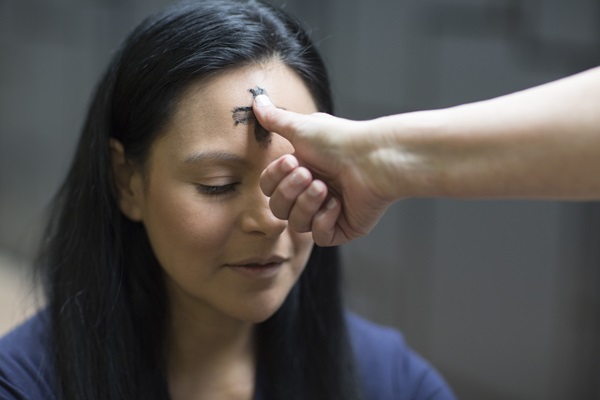Ash Wednesday begins the season of Lent, a time when many Christians prepare for Easter by observing a period of fasting, repentance, moderation and spiritual discipline. Although Ash Wednesday has ancient roots, it does not appear in the rituals of The United Methodist Church or our predecessor denominations until the 20th century.
More on Ash Wednesday
- 10 ideas for a more meaningful Ash Wednesday
- Chuck Knows Church video on Ash Wednesday
- Liturgy Man on The UMC's history of Ash Wednesday and why John Wesley omitted Ash Wednesday
- Ash Wednesday: The Beginning of Lent
Ash Wednesday emphasizes two themes: our sinfulness before God and our human mortality. The service focuses on both themes, helping us realize that both have been triumphed through the death and resurrection of Jesus Christ.
Ashes are an ancient symbol. In Genesis, we read that God formed human beings out of the dust of the earth (Genesis 2:7). After expulsion from the Garden of Eden, the first human beings are told by God, “you are dust, and to dust you shall return” (Genesis 3:19 NRSV). The Hebrew word translated dust, is occasionally translated ashes elsewhere. Throughout scripture, ashes are part of rituals when people seek forgiveness and mourn their sin (see Numbers 19:9, 17; Hebrews 9:13; Jonah 3:6; Matthew 11:21, and Luke 10:13, among others).
The imposition of ashes on the heads of Christians to mark the beginning of Lent can be traced at least to the 10th century. Marking the forehead with the sign of the cross is a more recent adaptation.
In earlier centuries, ashes were used to mark those who had been separated from the church because of serious sins and were seeking to be re-admitted to the fellowship of the church. In effect, they were redoing the process of final preparation for church membership along with those doing it for the first time. They were sprinkled with ashes and given rough garments to wear as a sign of sorrow for their sins and their commitment to seek renewal in Christian life through this season.
Since the tenth century, the observance of Ash Wednesday has become a general rite for all in the Western church. The Orthodox churches have never observed this rite.
United Methodists first adopted an official ritual for Ash Wednesday that involves the use of ashes in the 1992 Book of Worship. Prior to that time, Methodists either had no official service at all for this day (through 1964) or an “ashless” Ash Wednesday Service (1965 Book of Worship). The use of ashes remains optional in the current Book of Worship, and, indeed, in all rites for this day. Ashes are an "accessory" that demonstrates an awareness of mortality and an intent to repent. The actual awareness and the corporate and personal acts of repentance are the substance of services for the first day of Lent.
In many churches the ashes are made by burning the palms from the previous year's Palm Sunday.
As the ashes are placed on the forehead, words such as these are spoken: "Remember that you are dust and to dust you shall return," recalling God's words to Adam in Genesis 3:19, or “Repent, and believe the gospel” recalling the message of both John the Baptist and Jesus (Mark 1:15).
Through the service of ashes on the first day of Lent, we come before God recognizing our humanity, repenting of our sin, and remembering who we are and who we can be.
This content was produced by Ask The UMC, a ministry of United Methodist Communications.





